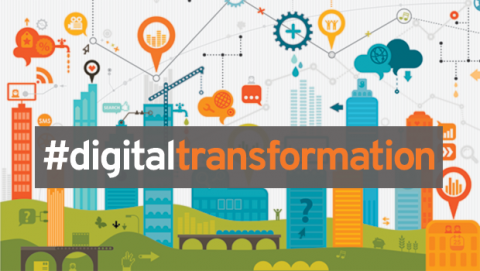A whopping 73 percent of enterprises failed to provide any business value whatsoever from their digital transformation efforts, according to an Everest Group study last year. Furthermore, 78 percent failed to meet their business objectives. Put another way, only 22 percent achieved their desired business results. This is horrific. Why does this happen?
While there are many causes of failure or underdelivering expected value in digital transformation, one that can be avoided is digital transformation exhaustion – the fatigue that happens due to continuous change.
[ Culture change is the hardest part of digital transformation. Get the digital transformation eBook: Teaching an elephant to dance. ]
3 reasons digital transformations fail
Let’s look at three factors that inevitably lead to exhaustion and the decisions your company needs to make to avoid it.
1. Lack of up-front commitment
Consider what happened at a global company undergoing digital transformation. The firm was successful in its Phase 1, in which it upgraded its legacy SAP software with the view that it would be the foundation of the ongoing transformation. However, the CEO stopped the broader initiative from continuing to Phase 2, where the exciting customer-facing elements were to be added. He could see the need and benefits of moving forward, but he felt the degree of disruption from so much enterprise-wide, cross-functional change was unacceptable and thus would encounter resistance.
This is a common failure point. Understanding and agreeing to the concept and vision for your transformation is not the same as committing to do what it takes to succeed. Company leaders can have a great meeting and talk about the need for change. But if they don’t commit to the massive change – what is necessary to achieve the vision and strategic intent – the initiative will fail.
How to avoid this digital transformation failure
Getting a deep enough commitment is like herding chickens. Leaders agree for different reasons and have conflicting visions of the end state. They commit to what they think the future will be, based on their own experiences, which vary greatly.
Managers and employees at every level must accept up front their personal ownership of the transformation's success. This may involve establishing a hypothesis of improved positioning in the market. You may need to uncover competitor or analogous situations that support the case. Leaders need to build a collective vision that is deeply felt and understood, even though the specifics of how to achieve it may not be known up front.
This is easier said than done. Go slow at first. Building commitment takes time. If you start down the path of trying to enable the change before enough stakeholders understand where the project is going, why the change is necessary, and that the change is possible, you will run a very high risk of debilitating, passive-aggressive behavior.
2. Failing to take an iterative sprint approach
We have observed companies trying to move to a new business model using a waterfall planning process. They come up with a vision, build a business case for the vision, fund the business case, and then work on a detailed two-year or 18-month plan to implement it. This approach has a very high proportion of failures.
In an office supply firm, the company was under extreme market pressure to reimagine its business as it faced an existential threat from online competitors. As you might expect, the company rushed into transformation with the CEO and CIO believing that the obvious market threats would galvanize the firm around this transformation. The firm achieved IT modernization in Phase 1 and some modest, quick-hit productivity successes in Phase 2. Then came problems.
They had not changed their budgeting process mindset to focus on delivering the intended results (rather than focusing on a business case). Moving faster would require incenting people to take on the risks. People weren’t sure the risk factor was acceptable and began talking about reverting to the old ways of operating. They had built a detailed waterfall plan before all the factors were known for a multiyear journey. Encountering enterprise fatigue in the face of widespread resistance, the CEO balked at continuing to Phase 3. Two years later, the company went into receivership.
How to avoid this digital transformation failure
Here’s how to remedy this very common dilemma. When planning the approach to the multiyear digital transformation journey, break the project into short-term projects and goals that can deliver measurable results aligned with the vision and strategic intent. We call these sprints or phases.
Use an iterative, agile approach similar to the Minimum Viable Product (MVP) approach and principles of venture capitalists and software start-ups. Despite many unknown factors up front, your company can control risk by funding the journey per sprints. You need to let the transformation journey unfold and evolve flexibly. Don’t build a detailed long-term plan without enough known factors.
[ Read our related article, Does your change management plan cut it in the digital age? ]
If you build in your learnings from each sprint, your company will get faster and faster at unlocking value. This will give your employees and leaders more energy, momentum, and support to keep going. Structuring the journey into smaller sprints makes the changes more manageable, helps maintain momentum, and avoids fatigue.






